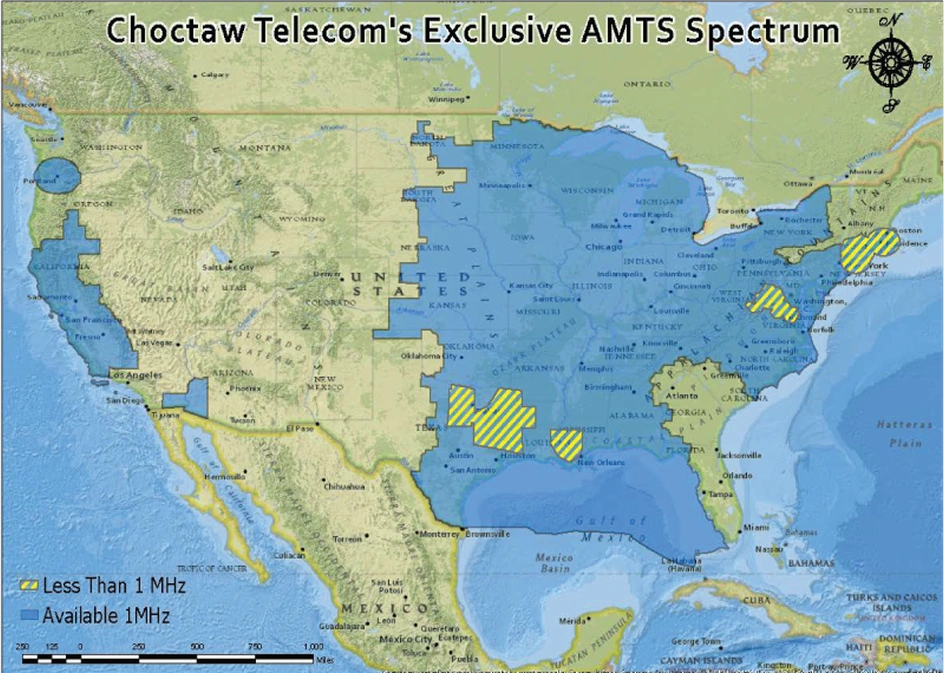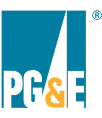Where We Are
Our Story
Spectrum Availability
AMTS Band Availability
Choctaw holds Automated Maritime Telecommunications System (AMTS) licenses in the:
- 217–218 MHz and 219–220 MHz bands
- Known as Block A licenses, paired into 500 kHz uplink/downlink channels

These are geographic area licenses, with defined coverage zones across the United States.

FAQs
Frequently Asked Questions

What is AMTS spectrum and why is it important?
The Automated Maritime Telecommunications System (AMTS) spectrum is licensed by the FCC and operates in the 217–220 MHz band. Although originally designated for maritime use, the FCC permits its use for land-based industrial operations. Its propagation characteristics and exclusive licensing make it ideal for mission-critical applications like remote monitoring, industrial IoT, and safety systems.
How is licensed spectrum different from unlicensed or cellular networks?
Licensed spectrum provides exclusive use, meaning no other users can legally transmit on the same frequency in your coverage area. This reduces interference, enhances reliability, and improves security—especially important for utilities, railroads, and oil & gas operators. Cellular and unlicensed bands can be congested, unpredictable, and dependent on third-party infrastructure.
What types of applications can run over Choctaw's spectrum?
Choctaw’s spectrum supports:
- - SCADA and remote telemetry
- - Smart grid infrastructure
- - Pipeline and substation monitoring
- - Positive Train Control (PTC)
- - Utility field workforce communications
- - Long-range drone and sensor data transmission
Can my existing radio or IoT equipment use Choctaw’s frequencies?
Yes, many industrial radio manufacturers offer devices that are certified for the 217–220 MHz band. Compatible models are available from CalAmp, Cambium, Ondas, GE MDS, 4RF, Tait, and others. Choctaw can assist with compatibility verification and vendor coordination.
What is the typical coverage range of Choctaw's spectrum?
AMTS spectrum in the 220 MHz range offers excellent non-line-of-sight propagation and can cover dozens of miles per base station—ideal for rural areas, long corridors like pipelines or railroads, and challenging terrain. Coverage can be further extended with high-powered base stations (up to 1 kW ERP).
What is involved in getting access to Choctaw’s spectrum?
We work directly with:
- - End users (utilities, transportation agencies, industrial operators)
- - Engineering and integration firms
- - Consultants and OEMs
Our team will coordinate the spectrum lease, licensing terms, and regulatory coordination to ensure compliance and performance. We can also assist with RF planning and vendor recommendations.
Is this spectrum suitable for broadband data?
No, the 217–220 MHz AMTS spectrum is best suited for wideband data, not broadband. While It supports reliable, high-throughput telemetry and industrial IoT applications, it is not designed for true broadband speeds like those offered by LTE or fiber. Typical use cases include SCADA, sensor networks, Positive Train Control, and other data-intensive—but not bandwidth-heavy—industrial systems. The narrow channel bandwidth (typically 500 kHz paired) is ideal for long-range, low-latency, mission-critical communications, not for streaming or large file transfers.
Is this spectrum FCC Part 90 or Part 80?
Choctaw’s AMTS licenses fall under FCC Part 80, Subpart Q, but are authorized for land-based operations through FCC waiver and policy precedent. These licenses are renewable indefinitely and are not subject to re-auction once assigned.








